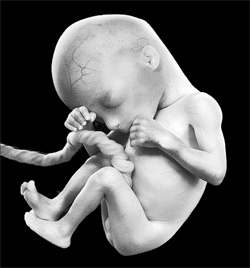In a research carried out at the University of California that studied in the effects of poor air quality on unborn babies, it was found that the number of premature births increased by 30% in high pollution areas. The presence of polycyclic aromatic hydrocarbons (PAH) is said to be the main culprit behind this rising problem. Further, the situation was found to fluctuate based on the season and residential location of the family. For the study, 100,000 births were considered. All these births happened within five miles of stations monitoring air quality. Twenty two months period was considered beginning in 2004 June. California Department of Health supplied information regarding the births, mothers and all detailed about births. The department also provided statistics regarding pollution levels obtained from the pollution monitoring centers. Toxicity and concentration of pollutants in the air were considered for the study.
Three different sources provided information regarding pollution. The three sources were South Coastal Air Quality Management District that provided information regarding toxic chemicals, model of traffic pollution and government pollution monitoring station. All these data together provided highly comprehensive information required for the study.  Divisions were made for age of the mother, race of the family, economic status and education levels. In the study, it was found that certain areas had higher concentrations of certain types of toxic pollutants, which resulted mostly from urbanization and industrial exhaust. When the effect of these dominant toxins were studied, it was found that premature births increased by 30% due to PAH, 10% due to fine particle pollutants and benzene and 21% due to fine particles of ammonium nitrate. Another interesting find was that there was a fluctuation in pollution levels based on climatic changes.
Divisions were made for age of the mother, race of the family, economic status and education levels. In the study, it was found that certain areas had higher concentrations of certain types of toxic pollutants, which resulted mostly from urbanization and industrial exhaust. When the effect of these dominant toxins were studied, it was found that premature births increased by 30% due to PAH, 10% due to fine particle pollutants and benzene and 21% due to fine particles of ammonium nitrate. Another interesting find was that there was a fluctuation in pollution levels based on climatic changes.
There is a higher concentration of pollutants in winter than in other seasons. It was also found that the concentration was higher in coastal areas. Lead researcher of the study, Dr. Beate Ritz said that the effect of pollution on pregnancy and delivery is significant. In addition to premature births, the other major problem caused by pollution is low birth weight in new born babies. He also said that traffic pollution was not the only source of pollution. Outlet from industries was also a major factor. A very important find of the study is that in addition to main pollutants, additional pollutants such as ammonium nitrate also have an equally bad effect on the unborn child. Proper planning of the town and segregating industrial areas from residential areas in addition to applying more stringent measures on curbing traffic pollution can help in avoiding the problem.